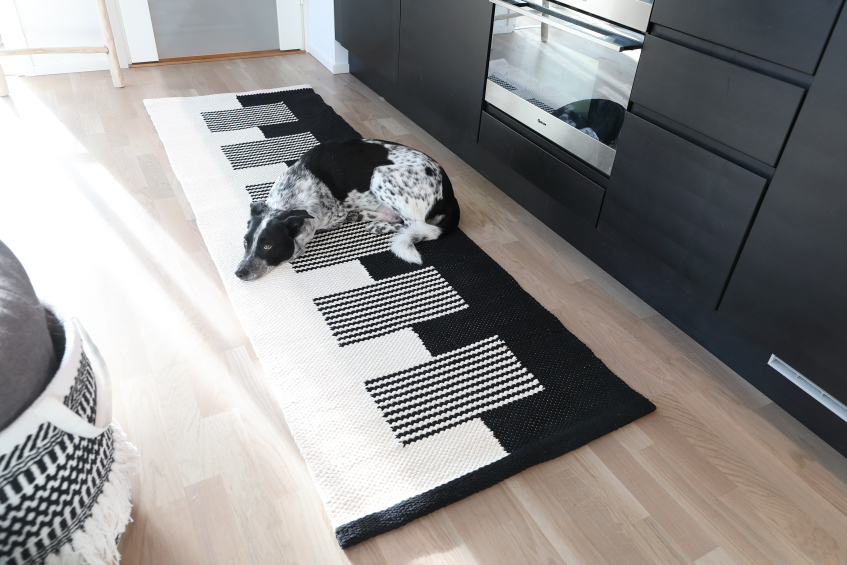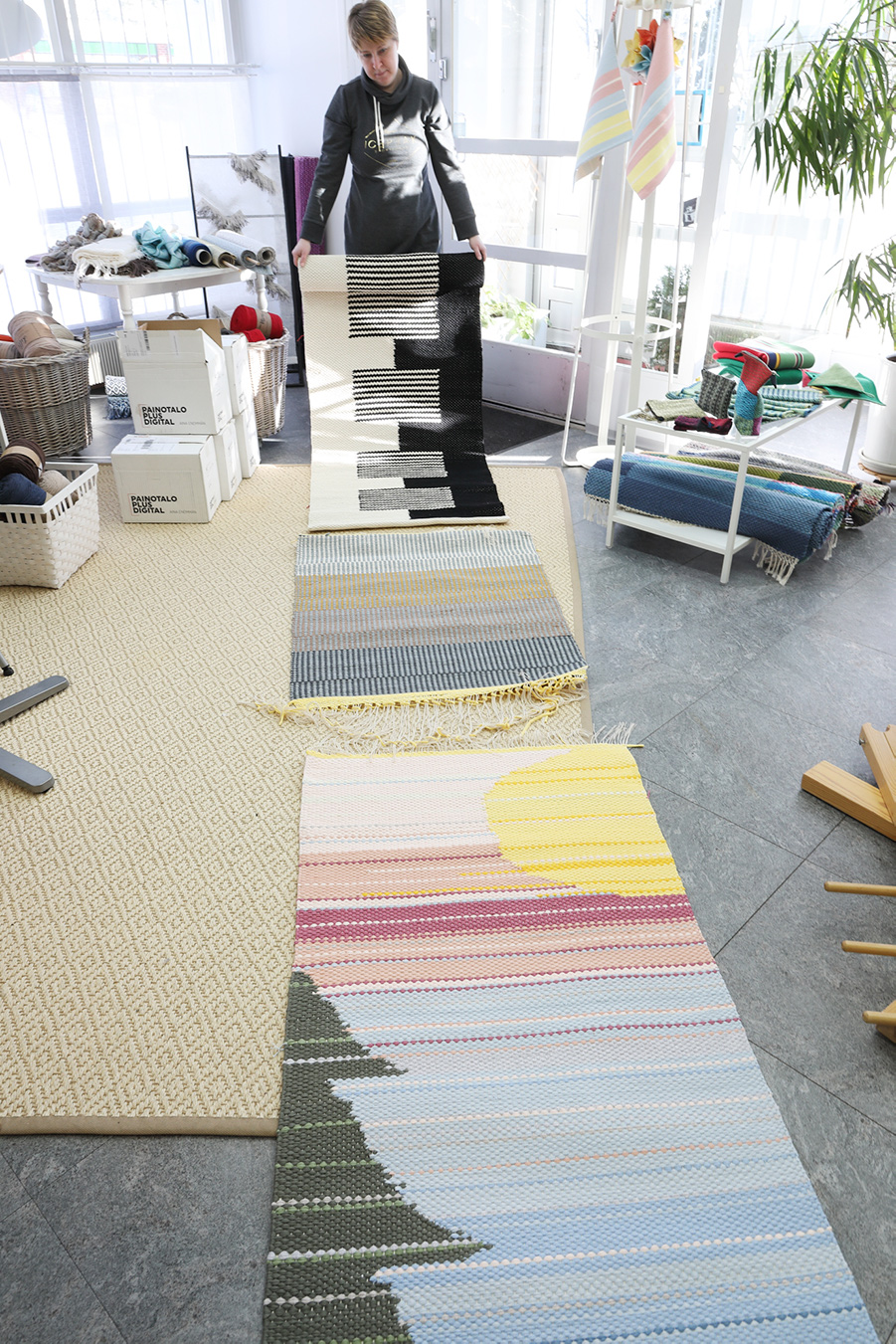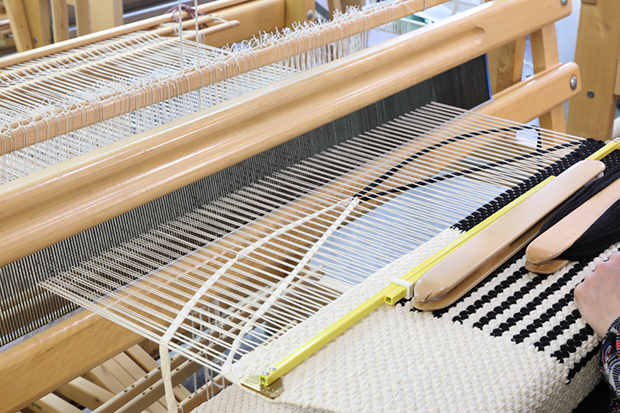You can weave easily two-coloured regular or free patterns with the clasped weft technique. We used the technique for rugs, but it can be utilized in many kinds of fabrics.
In the clasped weft technique, two different coloured wefts are in the same shed. They interlock in the middle of the fabric and turn back to their sides. The pattern is formed by adjusting the meeting point of the wefts. The pattern can also be free, in which case the meeting point is not determined strictly, but instead, the wefts meet at random points.
The clasped weft technique is known especially from Saori weaving, where the enjoyment of a weaving process and expressing oneself are important goals. The easy technique is suitable for everyone. An individual end product is just a phase in a pleasant weaving journey. Let’s remember this and leave space for creativity and enjoy the weaving process.

Salti immediately liked the black and white coloured rug. The colours are so own 😊

We wove a black and white Clasped rug 3754, a landscape pattern rug Morning Sun 3755 and a rib weave rug Lace Fringe 3756 into the same warp. The instructions are in The Weaver’s Pick issue June 2/2021. – You can also find the patterns from the Weaving Library!
Designing the figures
The weave structure is usually plain weave. The weft is doubled in the shed, so the sett should be chosen accordingly. You can make variations to the basic technique. Besides plain weave, the structure can be some other simple weft-faced weave.
The wefts can be different to each other and form a different kind of texture, as long as they are the same weight. The fabric can be multicoloured, and you can include solid-coloured areas that run from selvedge to selvedge.
When weaving with rag strips, the wefts must be strong enough to withstand pulling. A beautiful surface is obtained from the rags, which is especially suitable for free patterning. It doesn’t matter if the weft occasionally snaps off. It can be continued easily.
Try, and remember to be merciful to yourself. It doesn’t matter if the end result isn’t perfect and the edges of the carpet aren’t straight.



